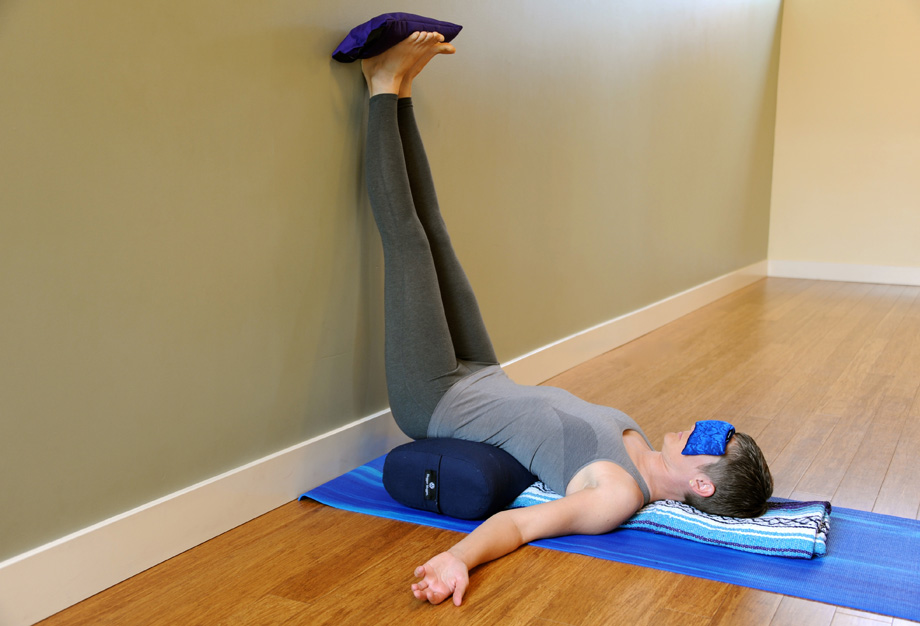
If you look at the appendix of Light on Yoga, you’ll see that going upside down is central to BKS Iyengar’s system of asana practice. In many of the listings where Iyengar “prescribes” specific poses to help alleviate conditions of imbalance, Sirsasana (Headstand) and Sarvangasana (Shoulderstand) are the first poses listed.
The preponderance of evidence suggests that inverting our bodies is helpful to combatting the negative effects of gravity over time. Because our bodies are 60 percent fluid, in particular, our fluid systems become more efficient when they’re not pooling in our lower extremities. This includes the venous blood, lymph and possibly the cerebrospinal fluid.
Consider this from an article in Yoga Journal:
“According to David Coulter, Ph.D., who taught anatomy at the University of Minnesota for 18 years, when one inverts, tissue fluids of the lower extremities drain—far more effectively than when one is asleep. Areas of congestion clear. In a 1992 Yoga International article on Headstand and the circulatory system, Coulter wrote: ‘If you can remain in an inverted posture for just 3 to 5 minutes, the blood will not only drain quickly to the heart, but tissue fluids will flow more efficiently into the veins and lymph channels of the lower extremities and of the abdominal and pelvic organs, facilitating a healthier exchange of nutrients and wastes between cells and capillaries.’”
But Here’s the Rub …
Not everyone can, or should, practice Headstand and Shoulderstand. Inversions are contraindicated for people with eye conditions such as detached retina and glaucoma. They are also not a good idea for people with untreated high blood pressure, as well as women who are on their menstrual periods. Practiced without proper guidance and preparation, inversions can cause spinal injury, especially in the cervical spine. These issues can include herniated discs, degenerative disc disease and arthritis.
I no longer teach active inversions regularly in my classes, with the exception of teaching Shoulderstand to certain students. In my classes where students have been practicing Sarvangasana for years and have been properly trained, we do practice Shoulderstand, but only when I’m confident that the students will use sufficient props and will not approach the practice aggressively.
The Restorative Solution
I do, however, teach restorative inversions in all my classes. These poses confer the benefits of inverting the body without the risks. (People with the contraindications I list above should avoid even restorative inversions. A qualified teacher may be able to help people with treated high blood pressure to very gradually work up to inverting through practicing an incremental series of mild inversions over a period of time.)
2 Restorative Inversions
These two restorative inversions are similar to set up. The difference is that in Viparita Karani (Legs Up the Wall Pose) the legs are completely inverted. In Instant Maui (Legs On a Chair), the knees are bent for a milder inversion. Many people find Instant Maui easier to hold for longer periods of time.
Make sure you gather all your props together before you start. I’ve listed the props you’ll need along with the links.
Here are links to specific instructions for both these poses:
Viparita Karani (Legs Up the Wall): Yoga mat, standard yoga bolster, yoga blanket plus these optional props: eye pillow, yoga strap, sandbag. (Placing a sandbag on your feet, as in the above photo, can help ground you as well as provide relief from the symptoms of sacroiliac dysfunction.)
Instant Maui (Legs On a Chair): Yoga mat, standard yoga bolster, one or more yoga blankets, a chair plus optional eye pillow.
